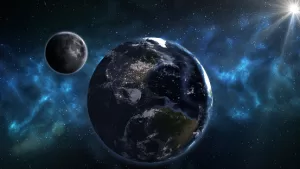
The discovered molecule Photo: Courtesy
Despite its unquestioned importance in the history of the early Universe, the HeH+ molecule has so far escaped detection in interstellar space, researchers said.
Studied in the laboratory as long ago as 1925, dedicated searches during the last decades have been unsuccessful, thereby challenging our understanding of the underlying chemical networks, they said.
“The chemistry of the universe began with HeH+. The lack of definitive evidence of its very existence in interstellar space has been a dilemma for astronomy for a long time,” said Rolf Gusten from the MPIfR.
In the late 1970s, astro-chemical models suggested the possibility that HeH+ might exist at detectable abundances in local astrophysical nebulae, and would be most easily observed in so-called planetary nebula, ejected by Sun-like stars in the last stage of their lifetime.Universe’s First Molecule Detected in Space
Scientists have detected the most ancient type of molecule in our universe in space for the first time ever.
Helium hydride ion (HeH+) was the first molecule that formed when, almost 14 billion years ago, falling temperatures in the young universe allowed recombination of the light elements produced in the Big Bang.
At that time, ionised hydrogen and neutral helium atoms reacted to form HeH+, said researchers from The Max Planck Institute for Radio Astronomy (MPIfR) in Germany.
Despite its importance in the history of the early Universe, HeH+ has so far escaped detection in astrophysical nebulae — cloud of gas and dust in outer space.





